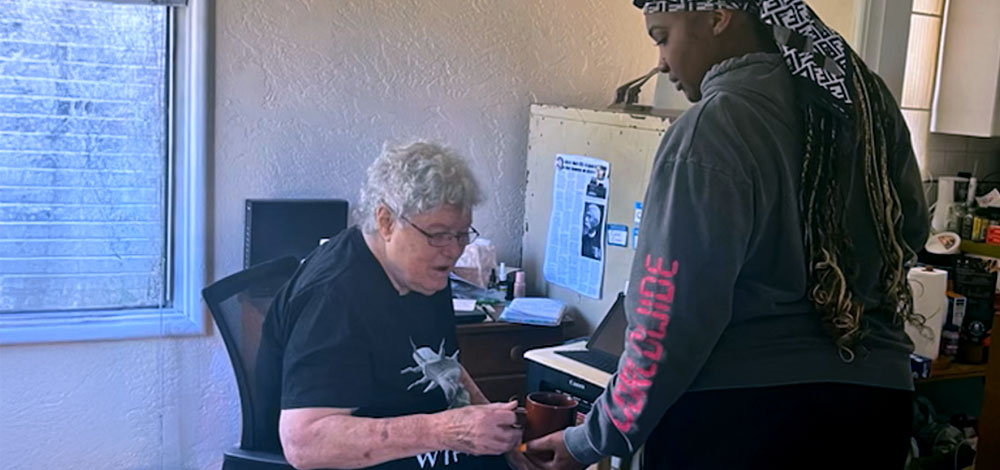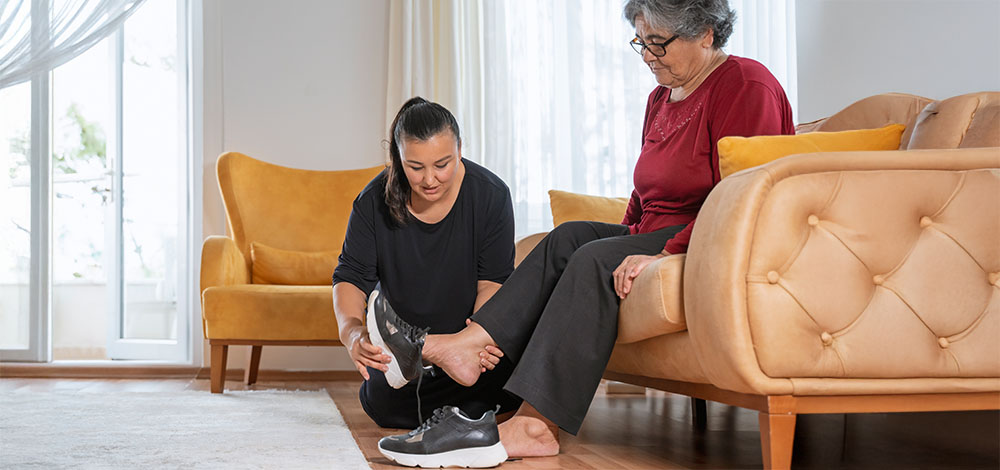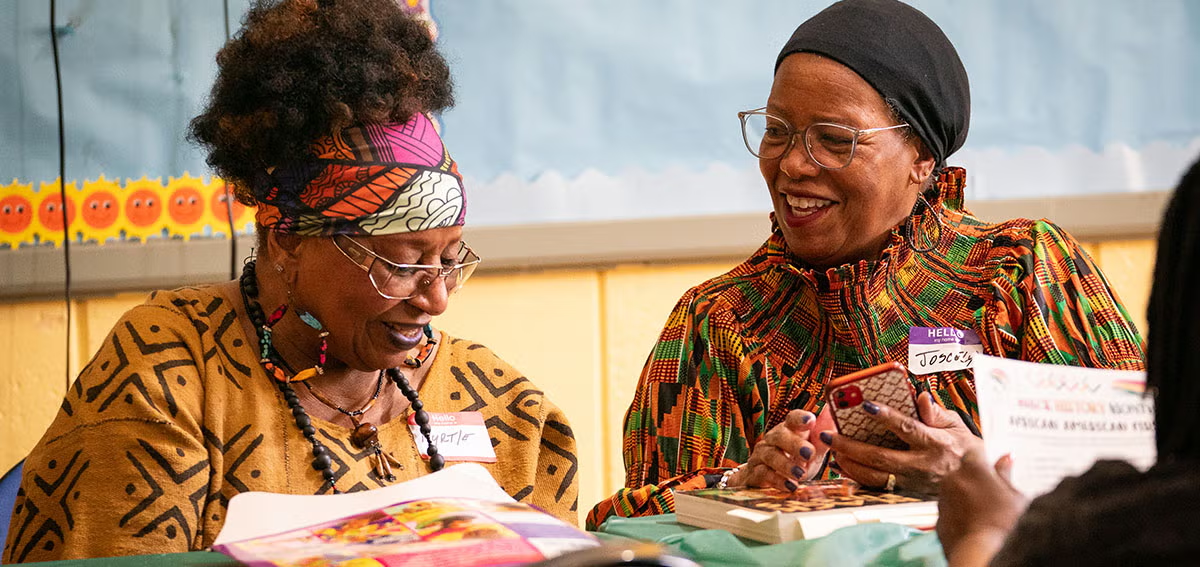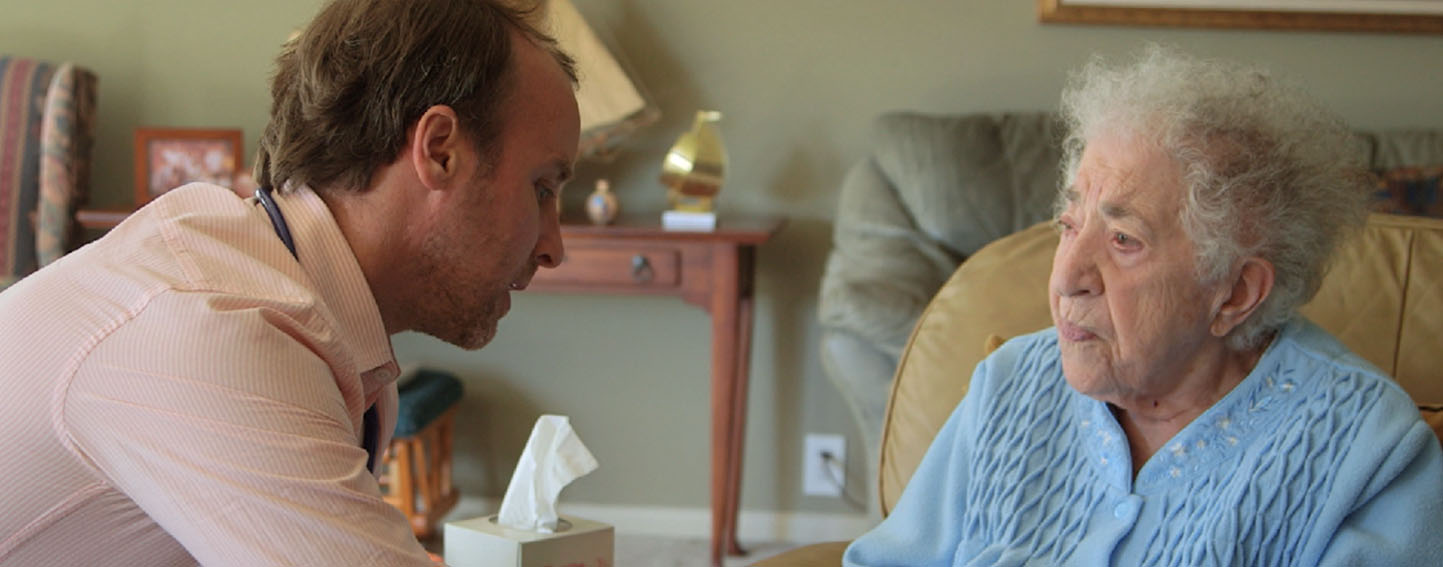
Editor’s Note: This is part of a series of articles on “The Big Shortage” in California’s health care workforce. Watch The CHCF Blog for more discussions of how the workforce is changing in response to care innovations and demographic trends.
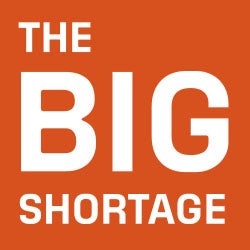
Health systems across the country are struggling to deal with the convergence of two powerful trends that will change the health care system in profound ways: a rapidly growing population of seniors and a shrinking supply of doctors — especially in primary and geriatric care. Many organizations are exploring a surprising mix of old-fashioned house calls and new technology to meet this need.
Every day in the US, 10,000 people mark their 65th birthday, and 4,000 turn 80, according to the Pew Research Center. In 2027, the number reaching 80 will pass 7,000 a day. As people live longer, most will develop health conditions requiring care — but fewer and fewer doctors will be available to meet those needs. By 2030, according to a new report from the Association of American Medical Colleges, the US will face a shortfall of 15,000 to 49,000 primary care physicians.
The shortage of geriatricians is even worse. According to the American Geriatrics Society, 20,000 geriatricians are needed to care for more than 14 million older Americans, but there were only about 7,300 in the US as of 2016. And as the elderly population explodes, the pool of these specialists is drying up, with residency programs consistently unable to recruit enough candidates for geriatric training.
Rethinking How to Keep Seniors Independent
For the US health care system, these demographic upheavals are triggering a fundamental reconsideration of the way services are organized and care is delivered. Large health care organizations are exploring ways to use technology, as well as restructure the workforce, to meet the exploding demand. A related goal is to help elderly patients avoid hospitals and nursing homes, allowing them to live independently and, if it is their wish, to die at home when the time comes.
Reducing hospital stays benefits everyone. For patients, it avoids discomfort, reduces costs, and eases the risk of contracting infections. For providers — who increasingly are paid bundled amounts for total care rather than fees for each service — there is a growing incentive to reduce expenses and deliver care more effectively and efficiently.
“It’s a lot cheaper, potentially, to have a care team monitoring people at their home than to have somebody in a hospital bed where they can get an infection,” said Dr. Thomas Nesbitt, associate vice chancellor for strategic technologies and alliances at UC Davis Health. “The goal is to reduce bed days in skilled nursing facilities and hospitals. And because more hospitals are getting reimbursed in a bundled payment, they like shortened lengths of stay. Hospitals may be the ones to partially fund this.”
A Landmark in Care
Among the innovators are two health systems — one nonprofit and one for-profit — that have developed models for providing home care to elderly patients. Landmark Health, the for-profit, operates in 20 markets and contracts with 13 insurers to provide home health services.
“We’re a mobile, patient-centric medical ‘home’ with urgent care strapped on our back,” said Dr. Scott Mancuso, chief clinical officer for Landmark’s western region. That means the clinicians of Landmark treat patients, most of them on Medicare plans, in their homes, doing everything from handling urgent needs like wound care to helping them manage chronic health problems. Landmark’s biggest footprint is in California, with teams serving Los Angeles, Orange County, Sacramento, San Diego, San Francisco, and San Mateo County.
“Many of our patients have multiple conditions — often five or more — and the frailty that goes along with that,” said Mancuso, an internal medicine and hospice specialist. For patients, that can make doctor visits taxing and unproductive, he said.
“A patient who is 75 with diabetes, chronic obstructive pulmonary disease, and heart disease needs more than a health plan that arranges rides,” Mancuso said. “They need a caregiver to get them dressed, and they often wait for an hour for the doctor to see them. When they finally get in, the doctor gives them 15 minutes and then they typically leave with five prescriptions and two to three specialty referrals.”
Patients who get signed up with Landmark are instead taken care of by a team of clinicians set up in what Mancuso calls a pod structure. Each pod manages 450 patients with one doctor, one nurse practitioner or physician’s assistant, one nurse care manager, and one care coordinator. There’s also an “ambassador” who connects closely with patients and helps them schedule visits. Social workers, psychiatrists, and pharmacists are shared across multiple pods.
Each team can handle a great deal of the medical, social, and emotional needs of their patients, visiting them for regular and urgent care and getting to know them in the comfort of their own home. For a group of new patients in the first year in the program, there were 40% fewer emergency room visits and 35% fewer hospitalizations, Mancuso said. The number of specialists each patient saw also declined, he said.
One Physician Is Enough
“We don’t think a patient needs five or more physicians involved in their care, which is what we often see,” Mancuso said. “In our model the number of specialists goes down because we touch patients more frequently and we get in front of complications and exacerbations.”
The teams can do many procedures that used to be done in clinics, doctor’s offices, or hospitals, including suturing, wound care, intravenous infusion of antibiotics and diuretics — even diagnostic exams like ultrasound, EKGs, and x-rays. “Anything an urgent care [center] can do, we can do at home,” Mancuso said.
Landmark’s care teams make some use of new technology, Mancuso said. They help patients who own computers install video applications for telemedicine visits, especially for those who need behavioral health services like therapy or psychiatry. For patients without computers, Landmark will sometimes provide tablets. In New York, Landmark is testing a squeezable device that patients or family members can use to measure electrical activity of the heart, blood oxygen levels, pulse rate, and blood pressure — and then transmit the readings to the Landmark team.
Still, Landmark’s approach is more high touch than high tech, Mancuso said. The biggest innovation is being present in the homes and lives of their patients and training them in things they should watch out for, he said. For example, patients are asked to weigh themselves daily and if they gain more than a pound a day, three days in a row, to call the Landmark team immediately.
MedStar Telehealth
A similar model is used by MedStar Health, a nonprofit health system serving 300,000 patients in the Washington, DC, area. For seniors who had previously been among the top users of hospital services, the program dramatically reduced emergency department and hospital admissions. A multicare team makes home visits and is backed up by specialists who can be consulted when needed. That allows the team to “be the quarterback for the patient’s care,” said William Sheahan, a MedStar vice president and director of its Telehealth Innovation Center.
MedStar makes wide use of telehealth services for things like stroke, allowing neurologists to consult with emergency room doctors to make rapid diagnoses and speed delivery of clot-busting medications. It recently moved an emergency physician to a video-enabled command center to assist nurses throughout the hospital. By enabling the doctor to stay in one place and consult with staff in a more focused way, his productivity increased by 50%. Now he can care for 125 patients in a nine-hour shift instead of 80, Sheahan said.
In another MedStar initiative, patients undergoing surgery can install a smartphone app before the procedure, allowing video follow-up care, said Terry Fairbanks, assistant vice president of ambulatory quality and safety at MedStar Health. “Some people have trouble getting themselves in after surgery,” Fairbanks said. “This is technology to allow better access to care.”
Kaiser Permanente Visits Members at Home
Because of its size and ability to try different things in its eight regions, Kaiser Permanente is also testing various home-visiting programs. In its Mid-Atlantic region, some patients are offered a choice of being admitted to the hospital or being treated at home by a geriatric specialist able to administer treatments such as intravenous diuretics and respiratory therapy. The 250 patients who’ve gone through this program have spent, on average, two fewer days in hospitals or emergency departments than patients who were hospitalized to start.
In Northern California, Kaiser rolled out “See You at Home,” which assigns doctors skilled in treating complex care and geriatrics to see patients with advanced illness. If a patient needs to be hospitalized or go to an extended care or rehab facility, the same doctor will follow the case, providing continuity and ensuring that the patient doesn’t get lost in the shuffle. In Southern California, Kaiser nurses make the house calls, patching in specialist physicians by telephone or video to consult, provide diagnoses, and coordinate treatment.
Dr. Stephen Parodi, associate executive director of the Permanente Medical Group, which provides care for Kaiser members in Northern California, said the experiments help to strike the right balance. “We’re actively trying to learn what are the best models of care for providing both high-touch and high-tech care in a scaled fashion,” he said.
Authors & Contributors

Rob Waters
Rob Waters is an award-winning health and science writer whose articles have appeared in BusinessWeek, Mother Jones, Stat, San Francisco magazine, the San Francisco Chronicle Sunday magazine, the Los Angeles Times, and many other publications. He is the founding editor of MindSite, a digital publication covering mental health news scheduled to launch in fall 2021.

